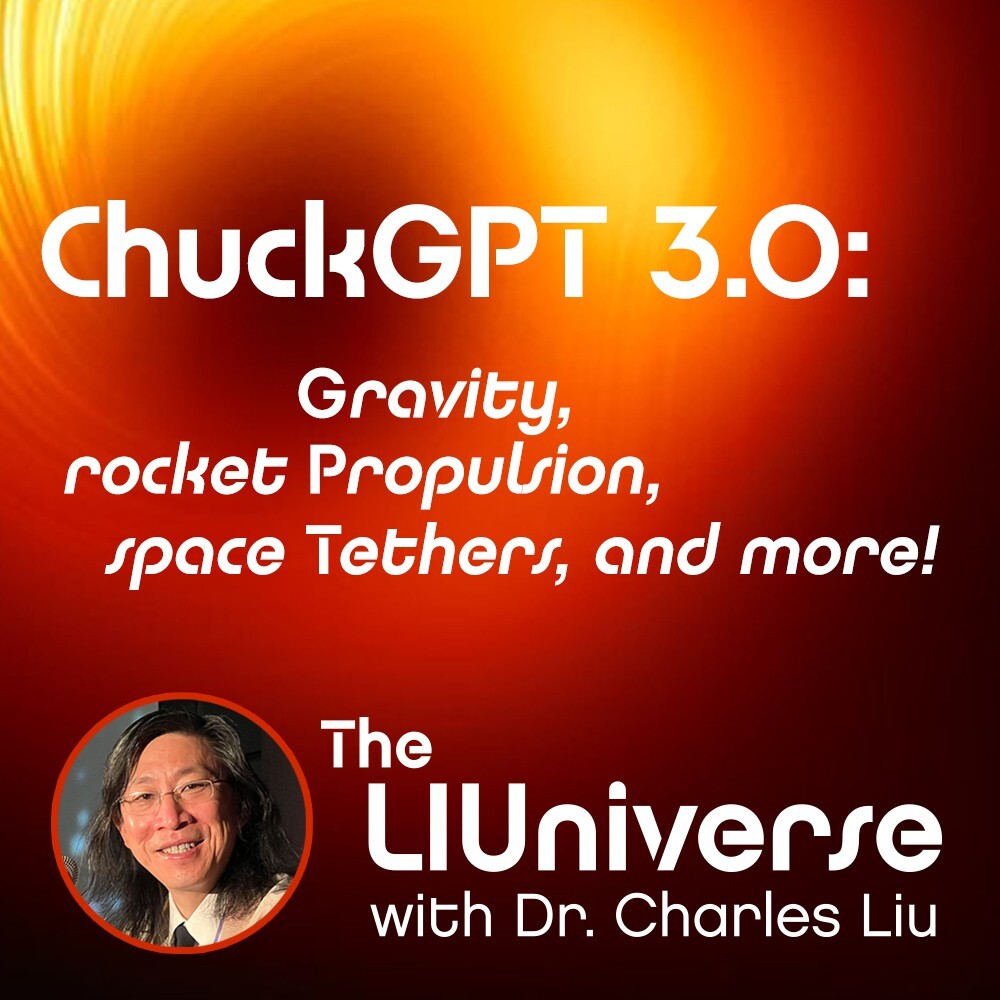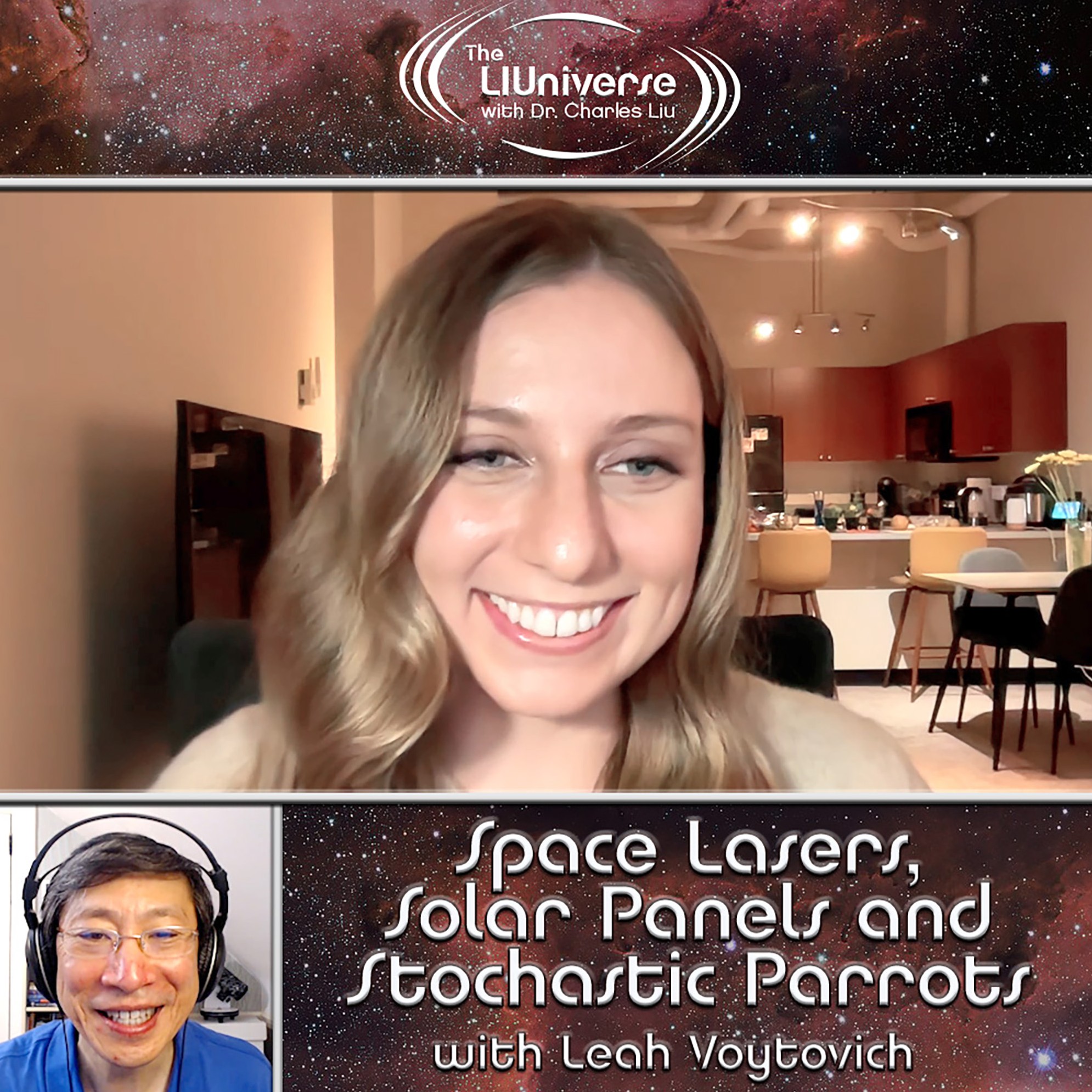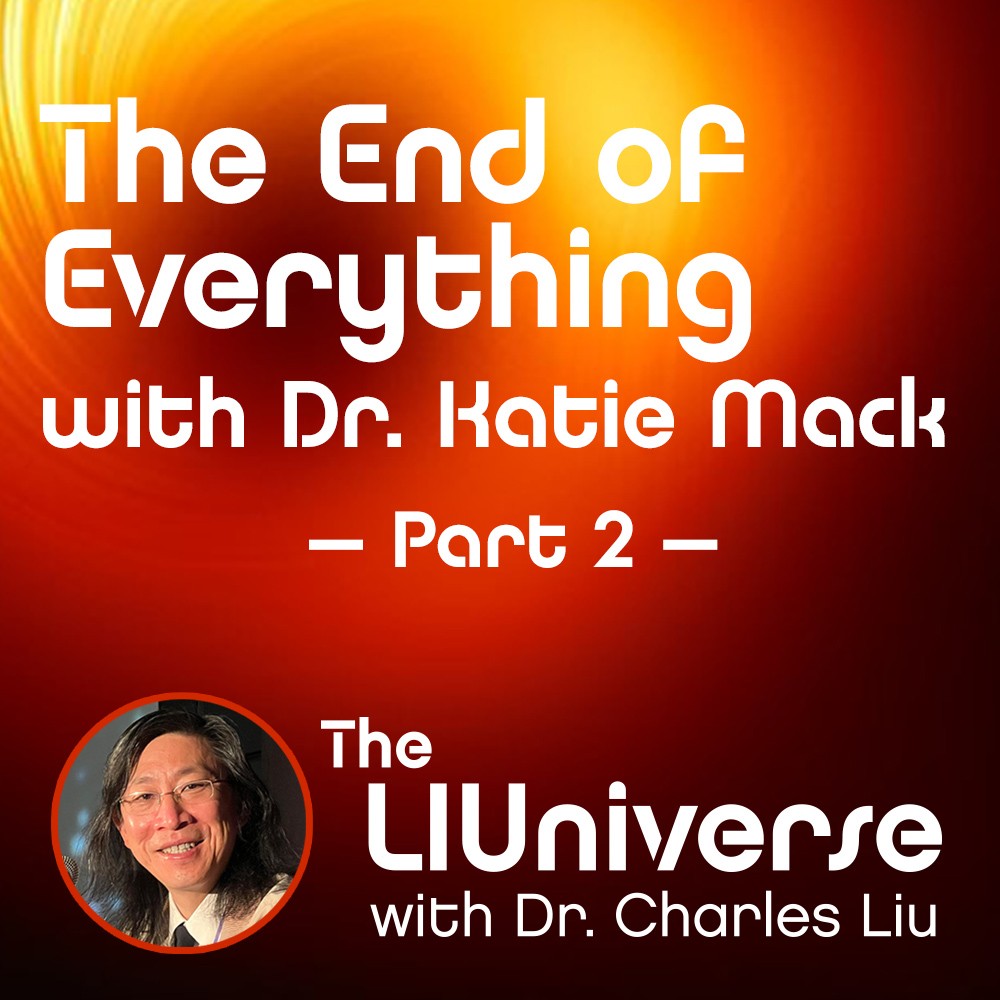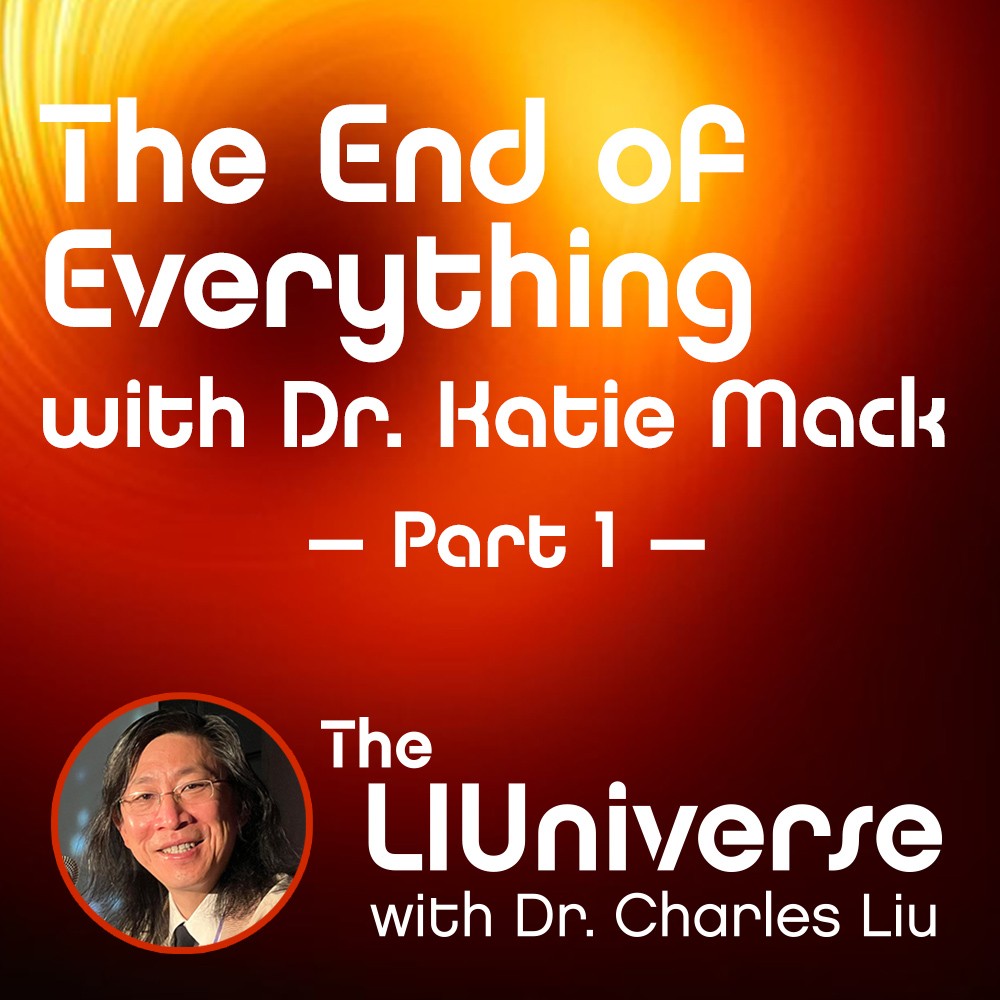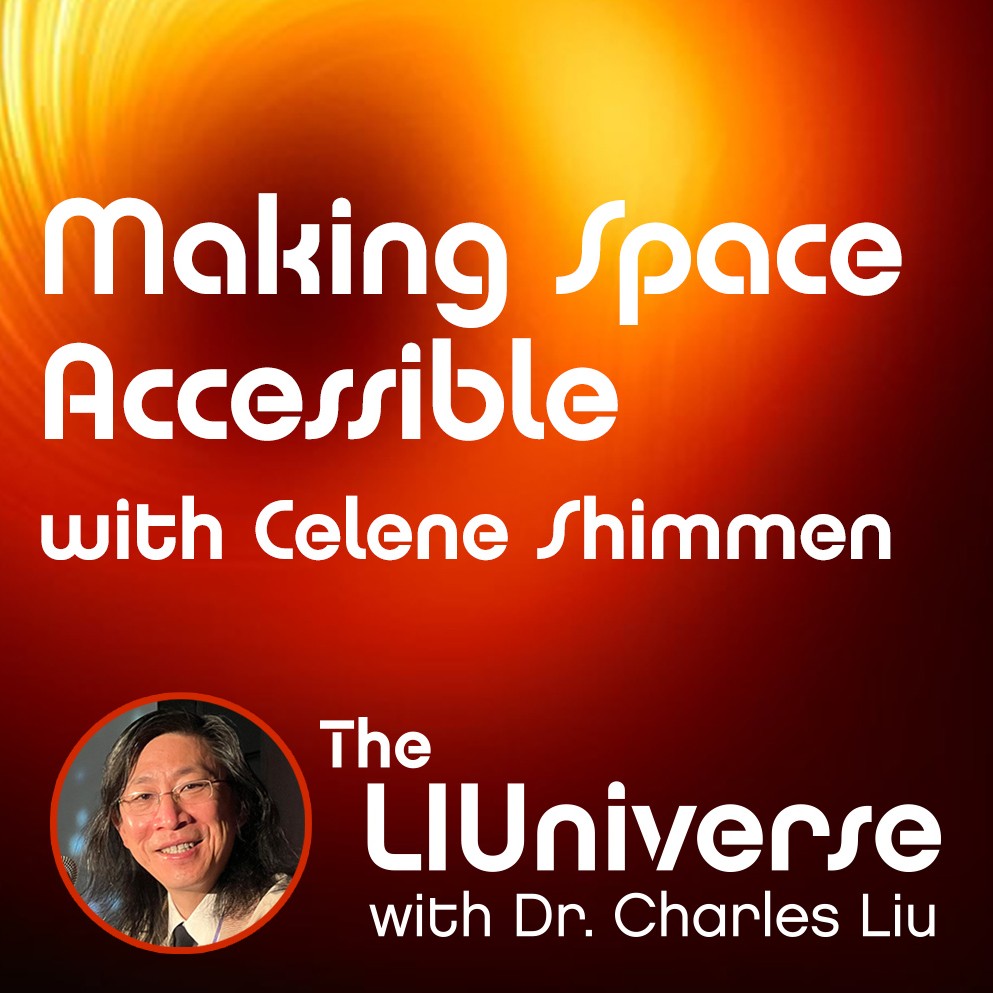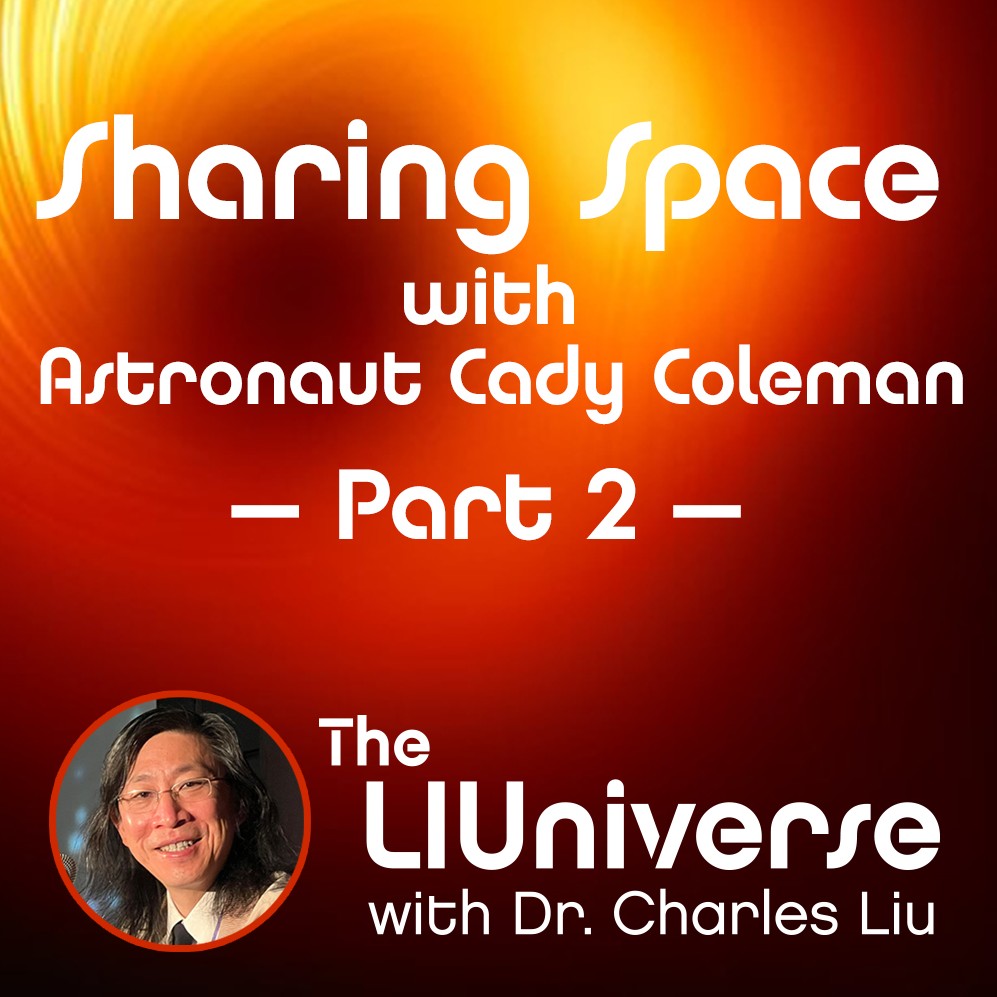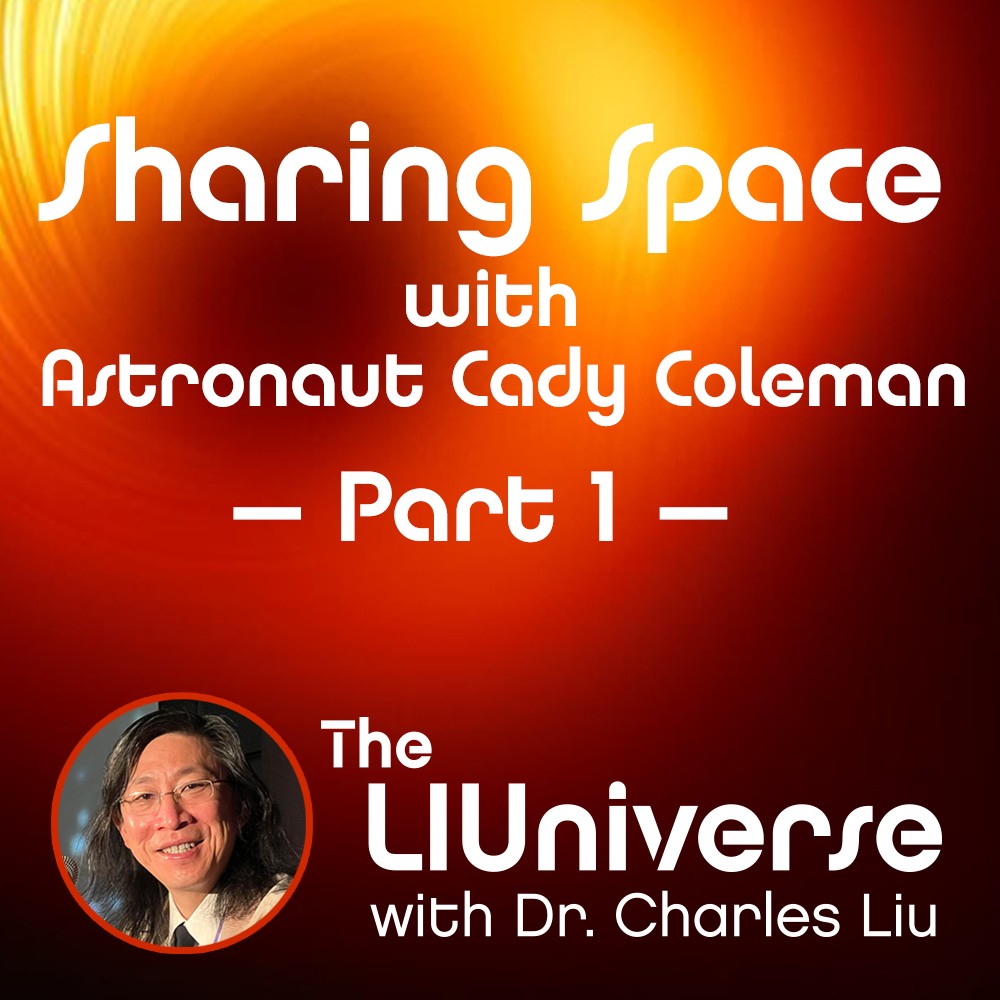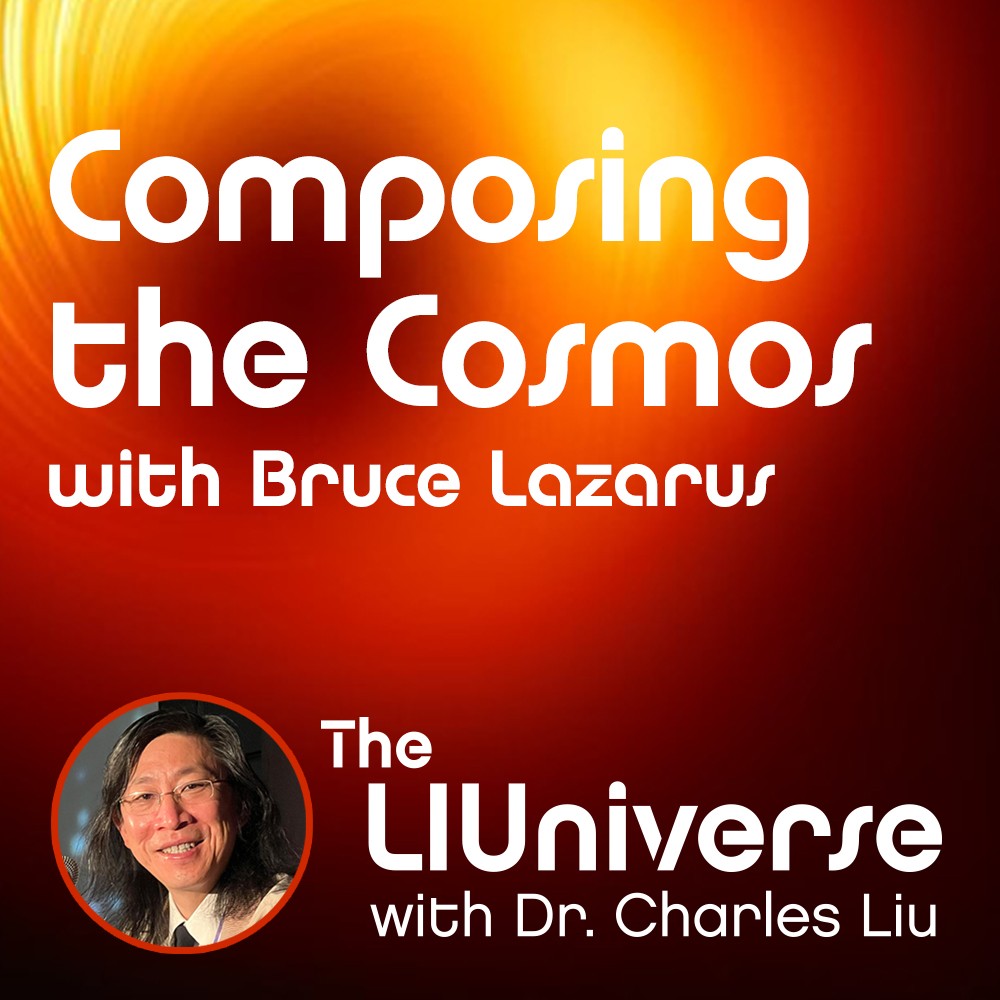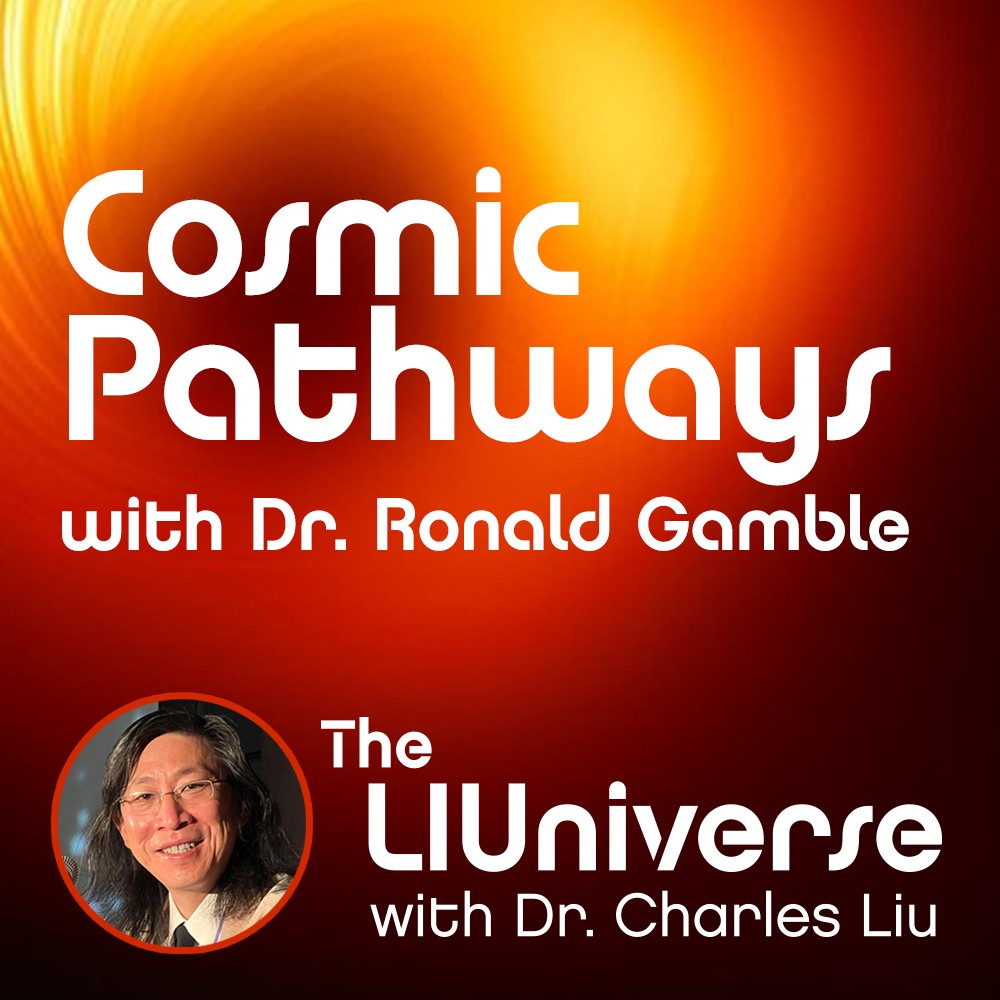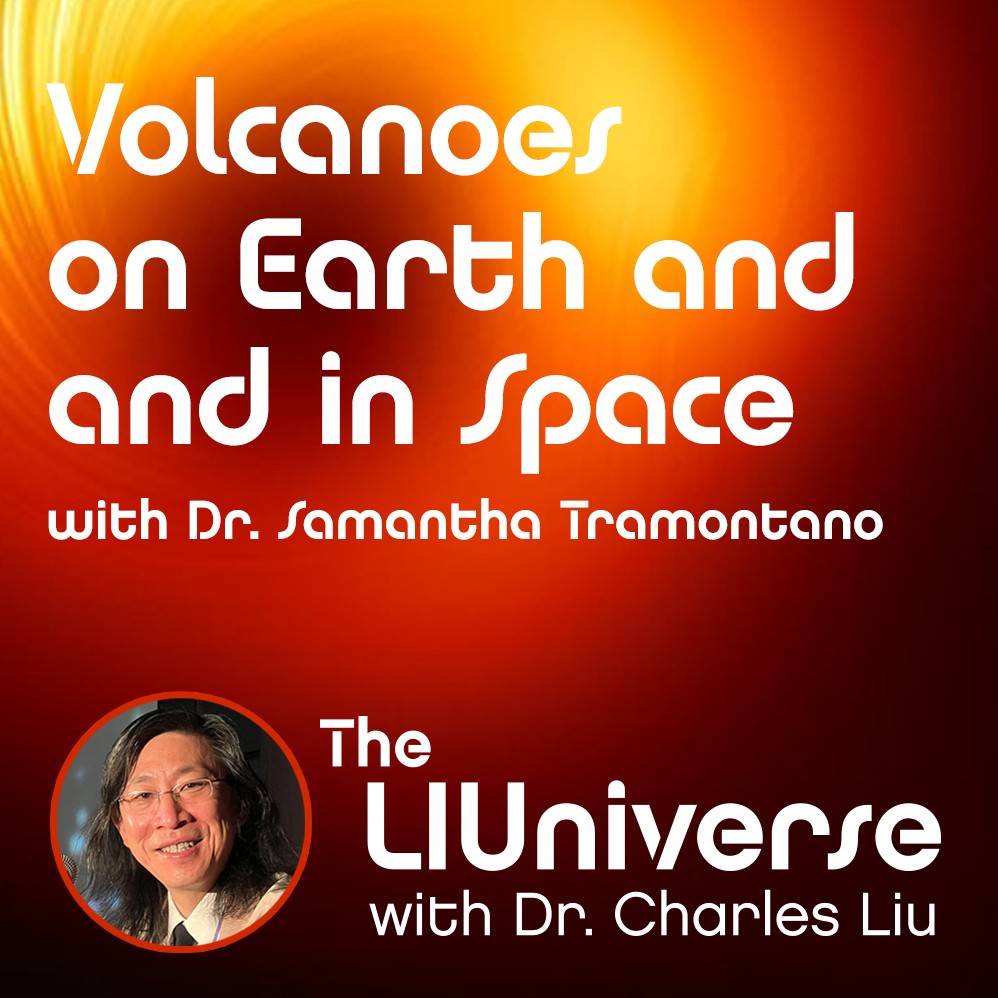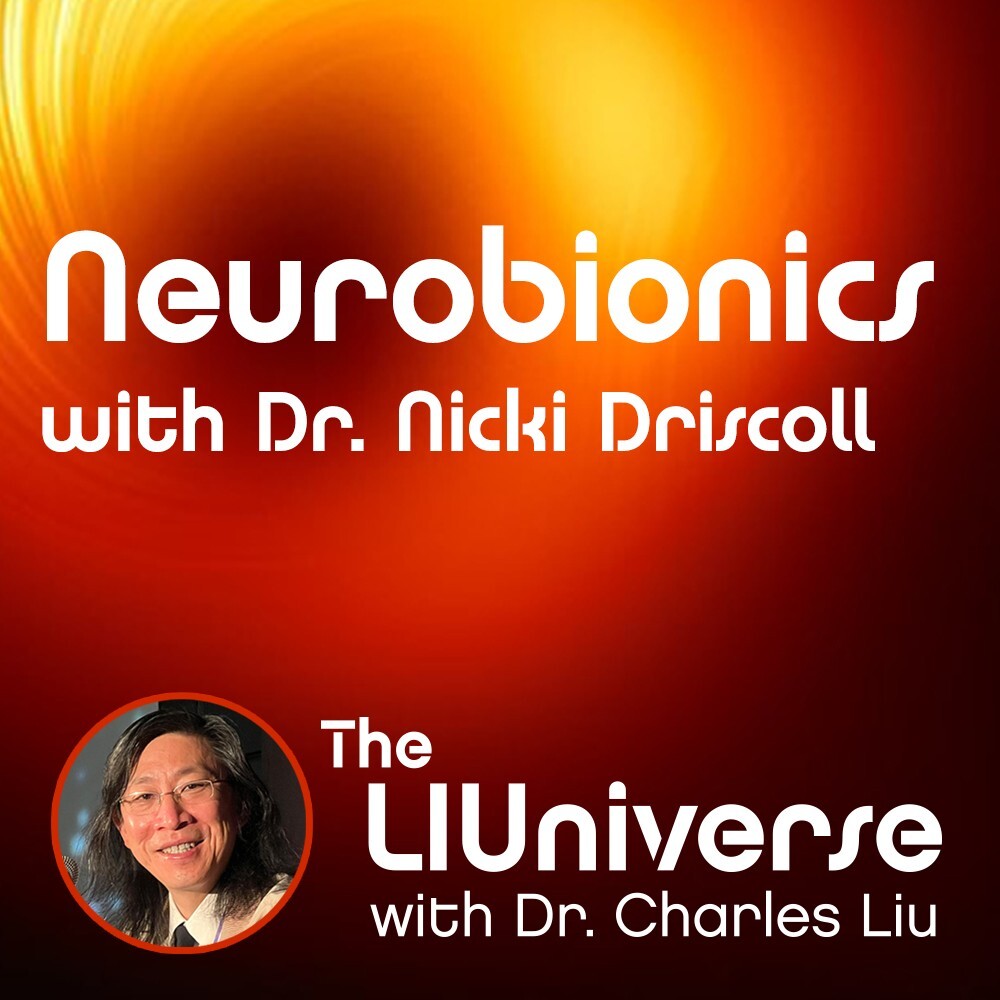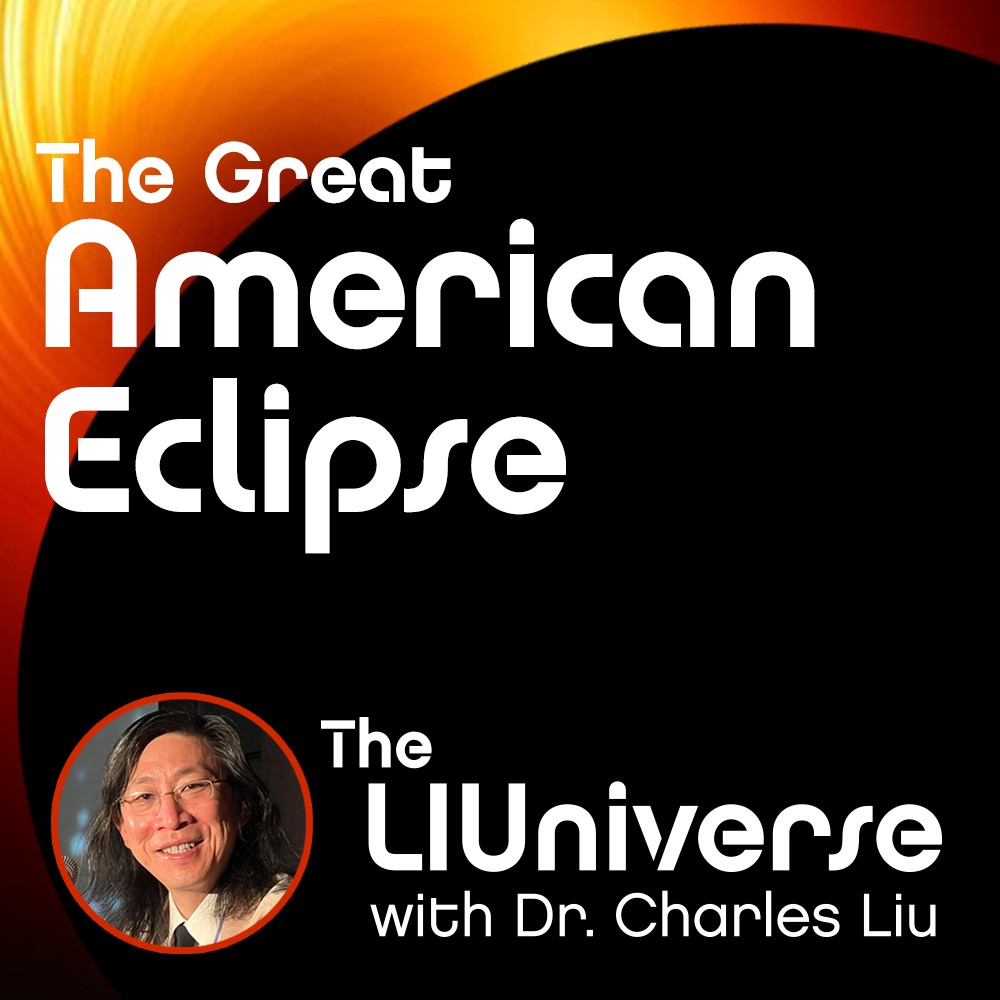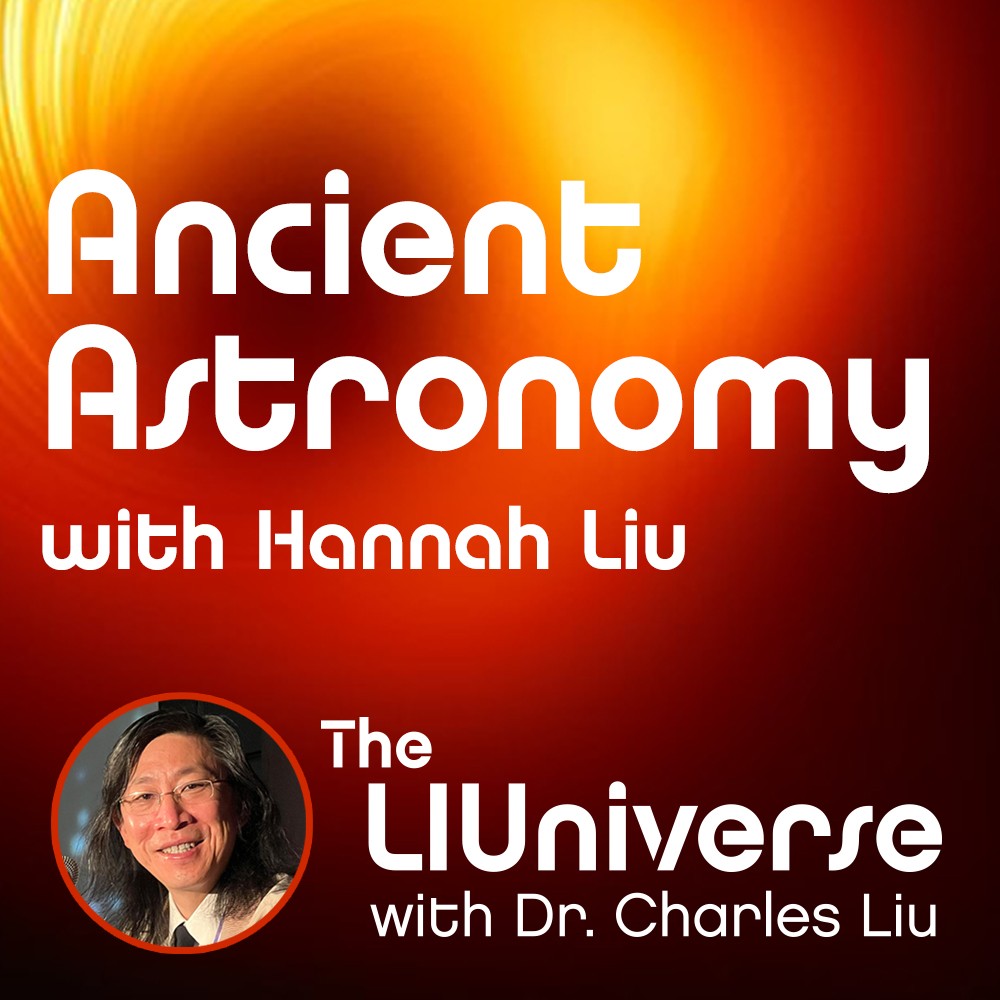Chuck GPT 3.0: Gravity, rocket Propulsion, space Tethers, and more!
Description
Does sound travel faster in space? Is the multiverse theory true? Can gravity escape a black hole? In our latest episode of our popular “Chuck GPT” series, Dr. Charles Liu and co-host Allen Liu welcome our Social Media/Patreon Community Director Stacey Severn to answer fan questions collected from Patreon patrons, students, Facebook and YouTube.
As always, though, we start off with the day’s joyfully cool cosmic thing: the recently released Euclid space telescope image of galactic cluster Abell 2390, which is about 2.7 billion light years away from Earth, in which more than 50,000 galaxies are visible. You’ll also hear about the Coma Cluster, the Virgo Cluster, the closest galactic cluster to us, and the planned Nancy Grace Roman Space Telescope.
Our first fan question comes from Emil R. on Patreon: “I wonder what would happen, if you tied one end of a really, really long rope to the International Space Station and have the other end hang down all the way down in the Earth's atmosphere. Would the current speed of the ISS circling the globe counteract the fact that the rope is in the atmosphere and experiencing drag? Would people on airplanes be able to see a rope swing by? Would the end of the rope on the ISS be stretched out or loose, and would it drag the ISS down in its orbit?”
Allen, who loves this question, addresses orbital velocity, drag, momentum, conservation of energy, space tethers, sky hooks, space elevators, and the ISS. Chuck talks about having seen the Tethered Satellite System trailing behind the Space Shuttle through the telescope he was using for his doctoral dissertation in the 1990s!
Our first student question comes from Michael L.: “Is the multiverse theory true?” Chuck’s answer involves eternal inflation, bubble universes, quantum mechanics, many worlds, and, somehow, Schrödinger’s cat.
From Facebook, Steven B. asks: “We all know that warp drive is still science fiction. But what is developing with other kinds of propulsion? Have we reached the limit of chemical propellants? What is happening with ion drives and nuclear systems?” Allen reviews the state of the art, including Ad Astra’s VASIMIR engine, which we covered in our 2-part episode Star Trucking with Franklin Chang-Diaz and Miranda Chang.
Our next student question is from Roberto J.: “How was gravity created?” Chuck says that while we just don’t know for certain, gravity may have come into existence during the “Plank time” at the very start of our universe before cosmic inflation began.
YouTuber @UnexpectedBooks asks, “How can gravity be “transmitted” via gravitons? It seems that a black hole would have no mass, because gravitons, like everything else, couldn’t escape it.” Chuck explains that even though definitely black holes have mass, if gravitons exist, they must be able to leave the event horizon, and Allen points out that gravitational waves do just that.
Our last student question is from Omar: “Does sound travel faster in space?” Chuck describes how sound waves travel, and why there’s enough particulate matter in space to still allow it, possibly even faster than here on Earth.
We end on a Patreon question from Eric S.: “The Heisenberg uncertainty principle is a casualty of the particular mathematics we have used to explore the quantum world. If we were to adjust those mathematics to a less consistent but more complete axiomatic viewpoint, could it be possible to 'see deeper'?” Chuck and Allen’s answer involves high-order math, the Heisenberg uncertainty principle, string theory and quantum mechanics.
We hope you enjoy this episode of The LIUniverse, and, if you do, please support us on Patreon.
Credits for Images This Episode:
– Euclid telescope image of Abell 2390 – ESA/Euclid/Euclid Consortium/NASA, image processing by J.-C. Cuillandre (CEA Paris-Saclay), G. Anselmi, ESA license
– Virgo Cluster of Galaxies – Chris Mihos (Case Western Reserve University)/ESO, CC BY 4.0
– Coma Cluster of Galaxies – Nielander, Public Domain
– Hubble telescope image of Abell 2390 – NASA, ESA, & Johan Richard (Caltech, USA), Public Domain
– Roman Space Telescope under construction – NASA/Chris Gunn, Public Domain
– Space Elevator Artist’s concept – Andrei Sokolov
– The ISS in orbit – NASA, Public Domain
– The Tethered Satellite System – Space Shuttle – NASA, Public Domain (Image: https://commons.wikimedia.org/wiki/File:STS-46_TSS-1_fully_extended.jpg)
– Many-worlds depiction of Schrödinger’s cat – Christian Schirm, Public Domain
– NEXIS Ion thruster – Jet Propulsion Laboratory, Public Domain
– Design of NASA & DARPA’s DRACO nuclear rocket – DARPA, Public Domain
– History of the universe diagram – NASA/WMAP Science Team, Public Domain
– Artist’s animation of gravitational waves – LIGO/T. Pyle, free to use
– Fourier transform of a signal – Wawo1102, Public Domain
– Waveform of same signal – Made with Desmos, Attribution
– Wavelet (Gabor) transform of same signal – Wawo1102, Public Domain
#TheLIUniverse #CharlesLiu #AllenLiu #SciencePodcast #AstronomyPodcast #Euclidspacetelescope #galacticcluster #Abell2390 #VirgoCluster #ComaCluster #darkmatter #darkenergy #orbitalvelocity #momentum #conservationofenergy #spacetethers #skyhooks #spaceelevators #ISS #InternationalSpaceStation #TetheredSatelliteSystem #SpaceShuttle #multiverse #theoryofthemultiverse #eternalinflation #bubbleuniverses #quantummechanics #manyworldstheory #schrodingerscat #soundwaves #blackhole #gravitons #gravity #Planktime #BigBang #Heisenberguncertaintyprinciple

